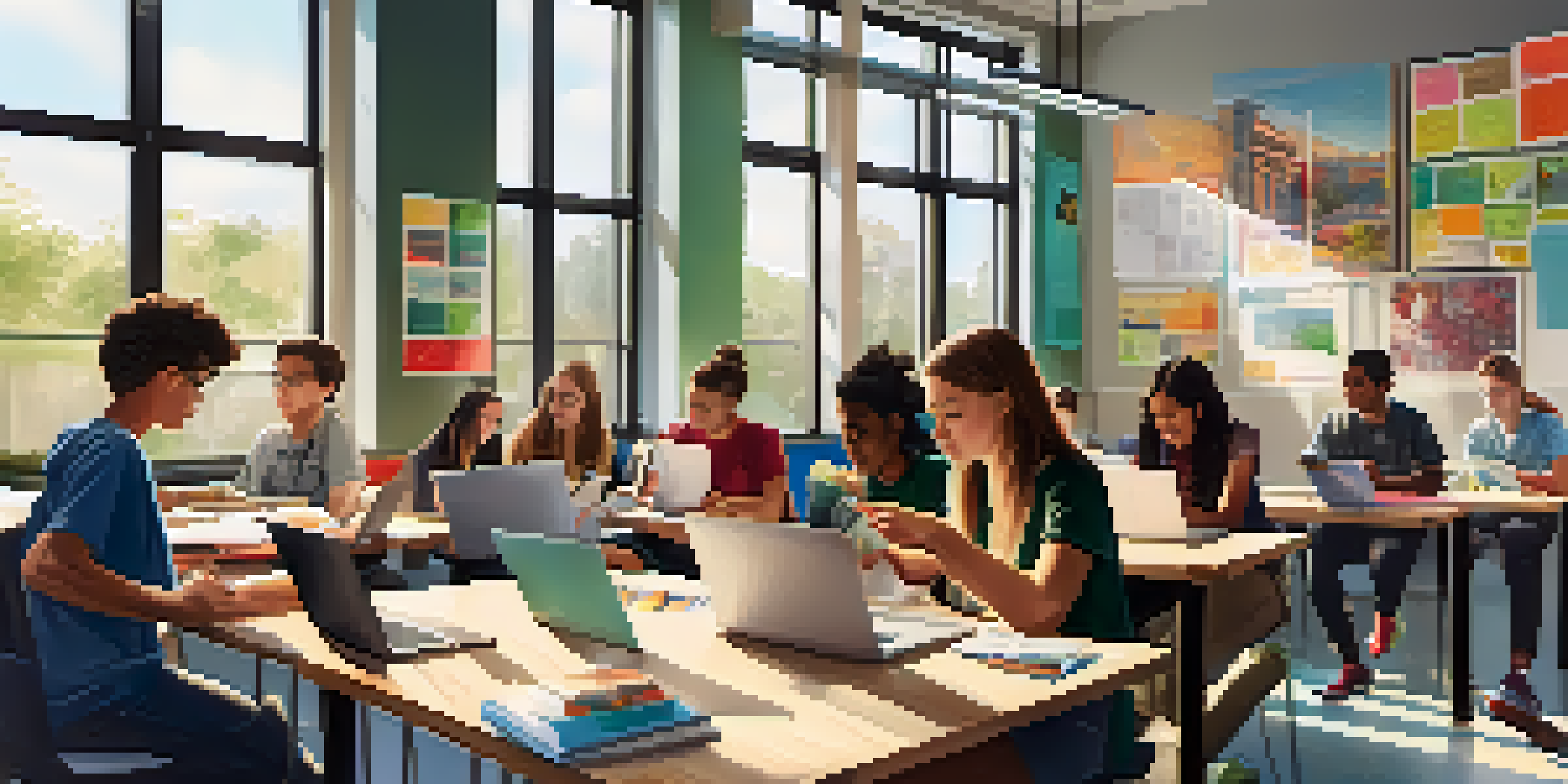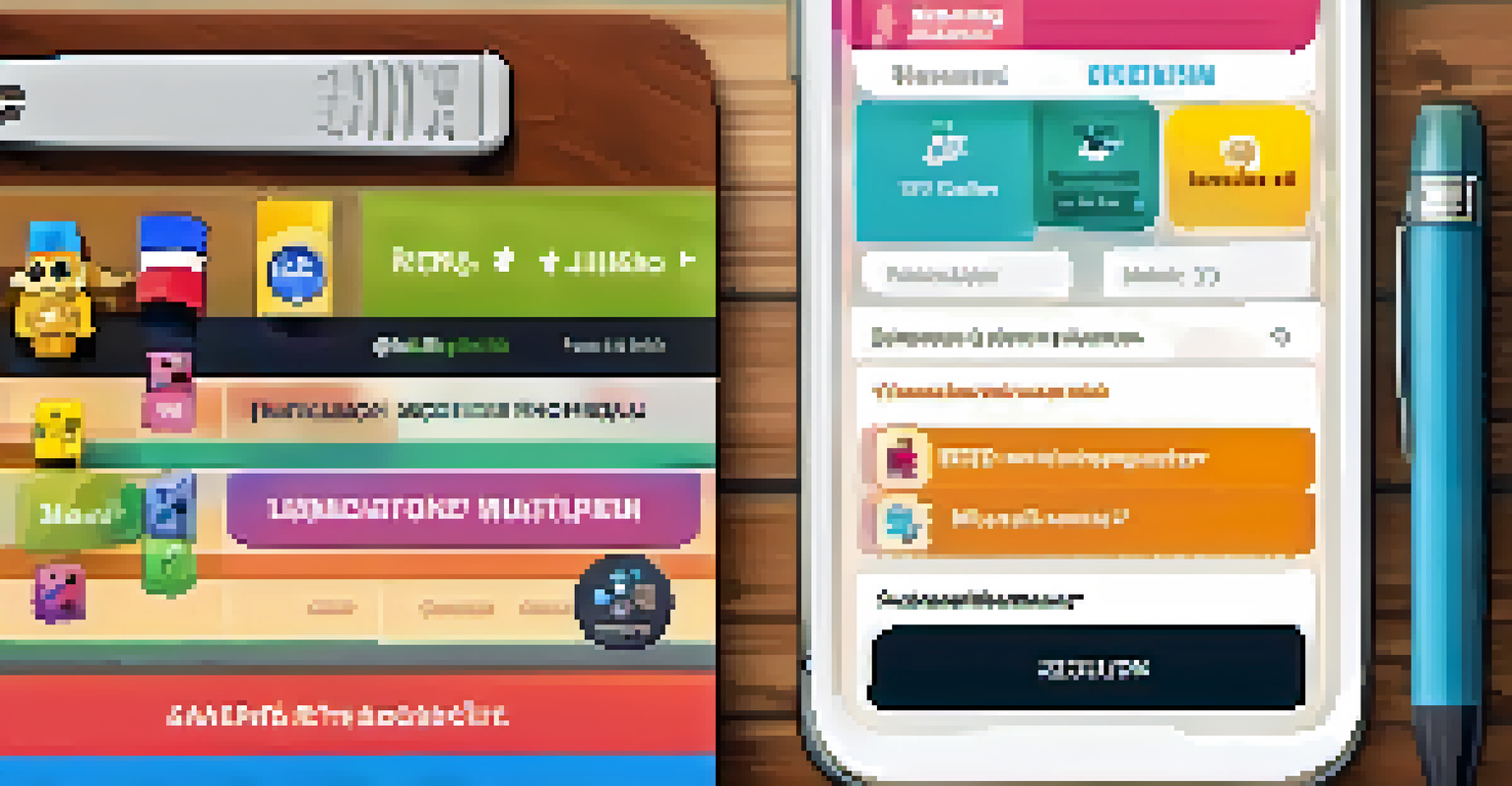Exploring Mobile Learning Tools for Collaborative Projects

The Rise of Mobile Learning in Education
Mobile learning, often termed m-learning, has transformed how we access and engage with educational content. With the proliferation of smartphones and tablets, learning is no longer confined to classrooms or traditional methods. This shift allows learners to acquire knowledge anytime, anywhere, making education more flexible and inclusive.
Mobile learning is not a trend, it’s a transformation that reshapes how we learn and connect.
In recent years, m-learning has gained traction, particularly among younger generations who are tech-savvy and prefer on-the-go access. This evolution has prompted educators and institutions to rethink their teaching strategies, integrating mobile technologies to foster deeper learning experiences. As a result, mobile learning tools are becoming indispensable in collaborative projects.
Moreover, mobile learning promotes collaboration by enabling real-time communication and feedback among team members. This connectivity not only enhances learning outcomes but also prepares students for a workforce that increasingly relies on digital collaboration tools.
Key Features of Effective Mobile Learning Tools
When exploring mobile learning tools, certain features stand out as essential for collaboration. These include user-friendly interfaces, compatibility across devices, and robust communication options like chat and video conferencing. A tool that is intuitive encourages participation, while cross-device compatibility ensures everyone can engage, regardless of their preferred technology.

Another important feature is the ability to share resources easily. Tools that allow users to upload, share, and edit documents or presentations in real-time can significantly enhance collaborative efforts. For example, platforms like Google Drive or Microsoft Teams facilitate seamless collaboration by enabling multiple users to work on the same project simultaneously.
Mobile Learning Transforms Education
Mobile learning, or m-learning, allows students to access educational content anytime and anywhere, promoting flexibility and inclusivity.
Finally, analytics and tracking capabilities can help teams assess progress and refine their strategies. Understanding how team members interact with the material can lead to improved outcomes and a more engaged learning environment.
Popular Mobile Learning Tools for Collaboration
There are several mobile learning tools that stand out in the realm of collaboration. For instance, Slack is popular for team communication, offering channels for specific topics and direct messaging features. This tool helps teams stay organized and ensures that everyone is on the same page during projects.
The future of education is not about the technology itself, but how we use it to enhance learning experiences.
Another excellent option is Trello, which utilizes boards to track tasks and project progress visually. Team members can assign responsibilities, set deadlines, and share updates, making it easy to monitor collaboration. Its mobile app ensures that team members can access and update their projects on the go.
Lastly, Zoom has become a staple for virtual meetings and discussions. Its mobile app allows users to attend video conferences from anywhere, fostering real-time collaboration among team members, even when they are miles apart.
Enhancing Engagement Through Gamification
Gamification is an excellent way to boost engagement in mobile learning. By incorporating game-like elements such as points, badges, and leaderboards, learners become more motivated to participate in collaborative projects. This approach transforms mundane tasks into enjoyable challenges, encouraging teamwork and competition.
For example, platforms like Kahoot! allow users to create quizzes that can be completed collaboratively, making learning fun and interactive. Group members can compete against each other, sharing knowledge while building camaraderie. The thrill of competition can lead to higher retention rates and a more invested team.
Collaboration Through Effective Tools
Key features of effective mobile learning tools, such as user-friendly interfaces and real-time communication, enhance collaboration among teams.
Additionally, gamification can foster a sense of achievement among learners. When teams work together to reach a common goal, they celebrate their successes, which reinforces collaboration and builds a positive learning atmosphere.
Challenges of Mobile Learning Tools
While mobile learning tools offer numerous benefits, they are not without challenges. One significant hurdle is ensuring all team members have access to the necessary devices and stable internet connections. Without this accessibility, some learners may feel left behind, creating inequities in collaborative projects.
Moreover, the overwhelming number of available tools can lead to decision fatigue. Teams may struggle to choose the right platform that fits their needs, which can hinder collaboration rather than enhance it. It's crucial for teams to evaluate their specific goals and choose tools that align with them.
Lastly, the potential for distractions on mobile devices cannot be ignored. Notifications from social media or other apps can interrupt focus, causing team members to disengage from the collaborative effort. Establishing guidelines for device use during projects can help mitigate this issue.
Best Practices for Implementing Mobile Learning Tools
To successfully implement mobile learning tools, teams should start by defining clear objectives. Understanding what they hope to achieve with collaboration will help guide the selection of appropriate tools. Goals can range from enhancing communication to improving project management.
In addition, training sessions can be beneficial. Educating team members on how to use the selected tools effectively ensures everyone feels comfortable and confident in their abilities. This initial investment in training can pay off significantly in terms of collaboration and productivity.
Gamification Boosts Engagement
Incorporating gamification elements in mobile learning can motivate learners, making collaborative tasks more enjoyable and fostering teamwork.
Finally, regular feedback loops can help teams refine their use of mobile learning tools. By encouraging open communication about what works and what doesn't, teams can continuously improve their collaborative processes.
The Future of Mobile Learning Collaboration
As technology continues to evolve, so too will mobile learning tools. The future promises even more innovative solutions that enhance collaborative projects. For instance, augmented reality (AR) and virtual reality (VR) could soon become mainstream, allowing teams to work together in immersive environments, regardless of geographical barriers.
Moreover, artificial intelligence (AI) will likely play a larger role in personalizing learning experiences. Tools that adapt to individual learners' needs and preferences can enhance collaboration by ensuring everyone is engaged at their own level. This tailored approach could lead to more effective teamwork.

Ultimately, the future of mobile learning collaboration is bright. With the right tools and strategies, teams can harness the power of technology to create enriching learning experiences that foster collaboration and innovation.